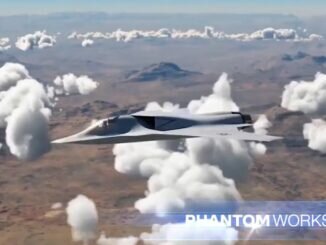Why does the USAF not do a Joint program with the US Navy in the first place and share some of the technology that would go into the NGAD F/A-XX designs, if the Air Force is getting serious about saving money then that could be the way forward. A common design with shared technology would be beneficial for both services, at least that is what I am currently thinking about right now.
There are reasons why the USAF and USN have been pursuing their own separate NGAD programs for the better part of the past decade or so. The two programs have different goals, both the USAF and USN were burned by the JSF experience, and future operations require more than just a single platform solution (*ahem* F-35).
The F/A-XX is more of a multi-mission platform to replace the F/A-18E/F, whereas the USAF needs a long-range air superiority platform to pick up the mission set of the F-15 and F-22 before it. Can the Rhino perform air superiority? Yes. But the Raptor
excels at it. Can the Raptor perform strike missions? It can and it has. But the Rhino is better suited for it. NGAD is a system of systems, it’s more than just a single air-dominance platform. It may be optionally manned or even unmanned. It’ll rely heavily on CCA. But F/A-XX will be more autonomous. It’ll work with CCA, but where are they going to stay when they’re not in use? There’s only so much space on the boat.
Secondly, you'd have too many cooks in the kitchen and there will be tradeoffs to appease the stakeholders. That was a big problem on the F-35 program. A design feature that may be beneficial for the USAF's mission may not be compatible with the US Navy's requirements and vice versa.Heavy-duty landing gear works for the Navy, but it's extra, unneeded weight for the Air Force. Folding wings are a requirement for carrier operations, but unnecessary for a land-based platform (again, unneeded weight and maintenance). So do you have two different wings, one for land and the other for the carrier? Then you lose commonality and cost-effectiveness in your production. What if the Joint-NGAD’s sea radar mode doesn't meet the requirements of what the Navy already uses? How much of a delay is that going to cause the program as a whole?
Some of the cost projections for the USAF's NGAD pointed to a platform that was potentially going to be larger than the YF-23, something approaching F-111 if not larger. That may be okay for the USAF with their nice, long runways and ample ramp space, but not for the Navy. Bigger planes means fewer planes you can take with you on the boat. It still has to fit within the confines of a carrier parking spot and be maintainable. Plus you still have to weigh low enough to recover back on the carrier without exceeding the weight limits of the arresting gear. A big reason the F/A-18E/F and F-35C have superior bring back - the amount of reserve fuel + ordnance the airframes can bring back to the carrier - compared to the F-14 is because both airframes don't weigh as much as the Tomcat.
As it currently stands, the F-35 JPO decides on what capabilities the F-35 gets in the future. Since you have the Air Force, Marines, Navy, and international partners all involved, you have multiple competing interests. So on a hypothetical Joint-NGAD program, if the Navy needs to focus on sea-search radar capabilities, and the USAF wants to focus on long range track, target, ID and engage…but the Navy has the least power since they're buying fewer aircraft, then guess who wins out?
However, the Navy controls its own fate on the Super Hornet just like how the USAF controls its own fate with F-15EX and F-22. So each program is owned by their own branch - because as much as people don't like to believe it, compromises were made to make the F-35 occur as it did, and not every compromise has aged as well as others. And that's ultimately what a lot of it comes down to. They want to focus on the unique/great capabilities of their respective programs, and not focus on having to integrate a bunch of "extra" stuff because other partner branches are also going to be reliant on that platform.
For example, because the F/A-XX and NGAD have different mission sets, the F/A-XX would have a wider portfolio of weapons that needs to be integrated onto it that NGAD just doesn't need. Being separate programs, this isn’t an issue for the USAF, but in a merged environment this changes.
We've seen this before on the F-35. Given the highly integrated nature of 5th and 6th Generation platforms. Like how do you integrate AIM-174, JSM, and AARGM at the same time without perhaps introducing compounding bugs? If the mission computer software is edited to integrate AARGM, you want to make sure the code that JSM is working with isn't going to break something that AARGM needs, and vice versa. It's been one of the biggest complaints of bugs reaching operational squadrons - new features come out, but then things break elsewhere. Imagine if Apple released a new iOS version that bricked everyone's ability to connect to WiFi - the phone still works, but you're missing a pretty important feature. No bueno.
Mind you, this is far from unique to modern fighters, which is part of why development cycles for fighters are as long as they are. But it's why its a tough nut to crack and soon you start looking at tradeoffs - do you spend the time and effort integrating JASSM on the Joint-NGAD because the Navy needs it when the Air Force doesn't and hope that doesn't set you back somewhere else more urgent?




![Phantom Works (4).mp4_snapshot_00.04_[2023.02.28_21.16.39].jpg](/data/attachments/279/279688-9926f1ff6d55db2389ecbe872e90563b.jpg)

